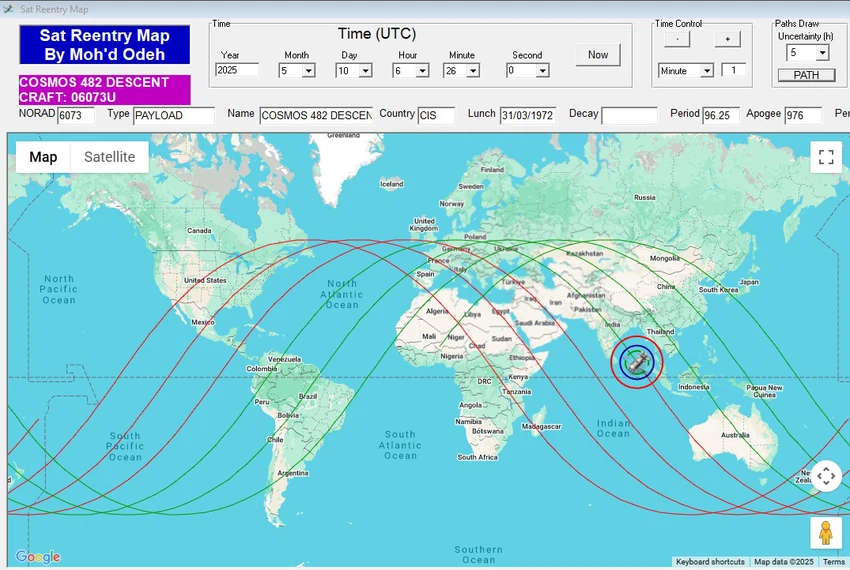International Astronomy Center: The disabled Cosmos 482 space probe will collide with Earth in the coming hours.
Arab Weather - The International Astronomy Center expects the disabled space probe (Cosmos 482) to fall to Earth this morning, Saturday, May 10, 2025 AD. It is a probe launched by the Soviet Union in 1972 and was designed to head towards the planet Venus and land on it, but the mission failed at its beginning and ended up in four pieces orbiting Earth for more than half a century. It is believed that the object that will fall to Earth tomorrow is the landing capsule, and since it is an artificial body orbiting Earth, it falls into the category of satellites, and the definition of a disabled active satellite or space debris.
This will be an uncontrolled fall, and the fall is expected to occur on Saturday, May 10, at 06:26 AM GMT, with an error of plus or minus 4.5 hours. This means that the fall could occur at any time on Saturday, from 2 AM to 11 AM GMT. This error will decrease the closer we get to the fall, but even two hours before the fall, it is not possible to know the exact location and time of the fall. However, there will be certain areas that the satellite is likely to fall over, and many agencies will be closely monitoring this fall, and updates will be announced as they occur. The attached map shows the current expected fall location, and the green and red lines show the places where the satellite may fall within the current margin of error.

The satellite weighs approximately 500 kilograms and is a spherical object with a diameter of about one meter. It is a tough object specially designed to withstand the intense pressure and heat of entering Venus' atmosphere. Therefore, it is expected to survive, and a large portion of it is expected to reach Earth. Although it is equipped with an automatic parachute system for a soft landing, experts believe this system will not work after 50 years in space.
It's worth noting that a satellite doesn't fall to Earth in one piece. Upon entering Earth's atmosphere, the intense heat caused by friction disintegrates the satellite and burns parts of it. Typically, 20 to 40% of the initial mass reaches Earth, but some pieces survive and manage to reach the ground. Experts say that the likelihood of this fall posing a direct threat to the lives of people or facilities is minimal. The probability of the debris hitting a person is only 1 in 100 billion! This represents 1.5 million times less than the probability of someone being killed in their home in an accident, 65,000 times less than the probability of someone being struck by lightning, and three times less than the probability of a meteorite falling on someone!
Such falls are not considered exceptionally rare, as relatively large satellites fall every few months. Recently, satellites that were remnants of Chinese launch rockets have fallen three times in recent years: in April 2021, July 2022, and October 2022.
All satellites orbiting Earth in low orbits (less than 1,000 km) eventually fall back to Earth due to constant friction with the atmosphere. About 70% of active satellite falls are uncontrolled, meaning they fall at an unknown time and place. Only 30% of satellite falls are controlled, and this only applies to large satellites or those carrying hazardous materials. Since Earth is approximately 70% water, the probability of a satellite's remains falling to Earth is only about 30%.
Arabia Weather App
Download the app to receive weather notifications and more..



